Lin | 24 | ISTJ | Certified Squatting Slav | translation studies | bookworm | coffee addict
Don't wanna be here? Send us removal request.
Note
Hi, so how about asks 4, 11 and 16 from the country asks?
Thank you so much for sending these my way! ❤️
Asks from “hi, I’m not from the US” ask set — answering for Slovakia.
4. Favourite dish specific for your country?
Vyprážaný syr s hranolčekmi a tatárskou omáčkou, my beloved! ❤️

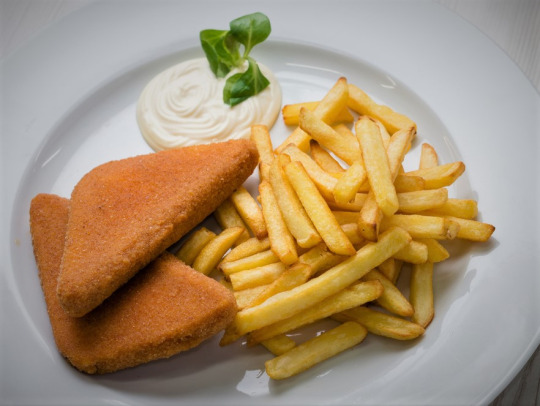
Fried cheese with French fries and Tartar sauce is something I could eat all day, every day, for breakfast, lunch, and dinner. I do love cheese in general and will never frown upon other types of fried cheese, but there is something I deeply treasure about fried Eidam as I have grown to love it here. I have other favourites, but I will most likely always choose this as my number one Slovak delicacy.
11. Favourite native writer/poet?
I have grown to appreciate the classics during my university studies, and I have always been fond of Naturism (which is actually a literary movement very typical of Slovak literature). Dobroslav Chrobák's Drak sa vracia (Dragon's Return) is a novel I come back to from time to time. Hana Gregorová is another important author to me — fun fact, she was also the first notable Slovak feminist.
From our contemporary authors, Juraj Červenák is a beloved of mine. I especially love Dobrodružstvá kapitána Báthoryho (the Adventures of Captain Báthory series), which is a flawlessly researched and captivatingly written body of work. If I ever managed to translate fiction into English, it would have to be this series.
16. Which stereotype about your country do you hate the most and which one do you somewhat agree with?
What I hate the most is the belief that we are lazy and lacking ambition. In fact, Slovakia has many talented, incredibly intelligent people, and I have had the greatest fortune to meet so many wonderful people who elevate the good reputation of our nation abroad. Unfortunately, they are not publicly famous, which is why not many people realise what these individuals do. We also have many talented people abroad. I also think it is not true that we generally tend to hate our country — as for myself, I love Slovakia and consider myself to be a proud Slovak, I simply think my idea of loving the motherland and showing my love for it differs significantly from what hejslováci try to represent with their words and deeds.
What I agree with is that we are not very hospitable towards foreigners. We like to present ourselves as a perfectly hospitable nation, but as one Redditor summed it up perfectly, "We are hospitable, but you need to be Slovak, white, straight, meat eater and alcohol drinker." I also believe it is true that many, many Slovaks can be viciously jealous of others and always searching for the next "class enemy" — first Hungarians, then Jews, then intelligentsia and businessmen, then Roma people, and now Ukrainians.
2 notes
·
View notes
Text
“hi, I’m not from the US” ask set
given how Americanised this site is, it’s important to celebrate all our countries and nationalities - with all their quirks and vices and ridiculousness, and all that might seem strange to outsiders.
1. favourite place in your country?
2. do you prefer spending your holidays in your country or travel abroad?
3. does your country have access to sea?
4. favourite dish specific for your country?
5. favourite song in your native language?
6. most hated song in your native language?
7. three words from your native language that you like the most?
8. do you get confused with other nationalities? if so, which ones and by whom?
9. which of your neighbouring countries would you like to visit most/know best?
10. most enjoyable swear word in your native language?
11. favourite native writer/poet?
12. what do you think about English translations of your favourite native prose/poem?
13. does your country (or family) have any specific superstitions or traditions that might seem strange to outsiders?
14. do you enjoy your country’s cinema and/or TV?
15. a saying, joke, or hermetic meme that only people from your country will get?
16. which stereotype about your country you hate the most and which one you somewhat agree with?
17. are you interested in your country’s history?
18. do you speak with a dialect of your native language?
19. do you like your country’s flag and/or emblem? what about the national anthem?
20. which sport is The Sport in your country?
21. if you could send two things from your country into space, what would they be?
22. what makes you proud about your country? what makes you ashamed?
23. which alcoholic beverage is the favoured one in your country?
24. what other nation is joked about most often in your country?
25. would you like to come from another place, be born in another country?
26. does your nationality get portrayed in Hollywood/American media? what do you think about the portrayal?
27. favourite national celebrity?
28. does your country have a lot of lakes, mountains, rivers? do you have favourites?
29. does your region/city have a beef with another place in your country?
30. do you have people of different nationalities in your family?
65K notes
·
View notes
Text
Set up my LinkedIn profile and sent my first job application. Things are getting real. 😬
9 notes
·
View notes
Text
Reading Brána Irkally be like:

#juraj červenák#dobrodružstvá kapitána báthoryho#the adventures of captain báthory#brána irkally#the gate of irkalla#stepan voronin
0 notes
Text
There’s a word in Armenian — արևահամ (arevaham) — that has no direct equivalent in English, yet it carries the warmth of an entire season, both in nature and in one's life.
It’s made of two roots: արև (arev), meaning "sun", and համ (ham), meaning "taste" or "flavor". Together, they form a word that means "sun-flavored", but it’s much more than that. It's a poetic way of describing something that’s been touched, ripened, or enriched by the sun, and carries "the taste", the warmth of the sun within itself.
As Charents wrote: "I love the sun-flavored (arevaham) word of my sweet Armenia."
Alongside արևահամ (“sun-flavored”), we have another luminous word: արևաբույր (arevabuyr). It means “sun-scented”. It is warmth made fragrant. Light made tender and almost tangible.
As Gurgen Mahari wrote: "The fresh morning air, sun-scented (arevabuyr) and rain-flavored, filled my heart with joyful longing."
1K notes
·
View notes
Text
stay earnest, be crazy, study study study, flirt with philosophy, cry at 2am then ace the test, fall in love with sentences, question everything, romanticize gray weather, seek truth like its art, read freud for fun, argue like you’re defending a dissertation, quote camus in casual texts, fear nothing but mediocrity
971 notes
·
View notes
Text
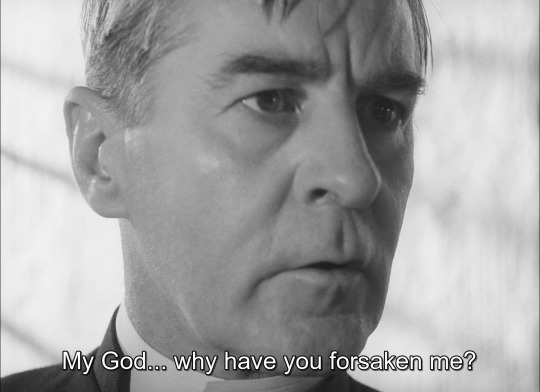


Winter Light (1963) dir. Ingmar Bergman / The Bible, Matthew 27:46 / Conclave (2023) dir. Edward Berger
#winter light#ingmar bergman#conclave#robert harris#edward berger#Bible#Matthew 27 46#eli eli lama sabachthani
124 notes
·
View notes
Note
I've seen a post you've reblogged and added to, among many things about women showing nipples. Can you recommend any ref material (articles, videos, etc.) are share your knowledge about this? Cause I'm curious about that, as nowadays going out in a shirt without a bra makes you indecent, while in like 90s it was okayish? I wonder how it was in previous centuries.
There is a really cool academic paper about bare breast dresses in 17th century England specifically. I think anyone can read it by creating a free account.
Abby Cox also has a good video about the cleavage during the past 500 years in which she goes through also the nip slip phenomena.
I don't have other sources that specifically focus on this subject, though many sources about specific decades touch on it, but I do have my primary source image collection, so I can sum up the history of the bare nipple.
So my findings from primary source images (I could be wrong and maybe I just haven't found earlier examples, since the paper above mentions briefly that there were bear-breast styles as early as 15th century) is that the Venetians were the first ones to show the nipple for courtly fashion. At the same time in other places in Europe they sported the early Elizabethan no-boob style that completely covered and flattened the chest. In the other corners of Italy the necklines were also low but less extreme. Venetian kirtle necklines dropped extremely low as early as 1560s and they combined extremely sheer, basically see-through partlets with their kirtle. First example below is a 1565-70 portrait of a Venetian lady with the nipples just barely covered waiting slip into view with a movement of arm. There was an even more extreme version of this with the kirtle being literally underboob style, still with a sheer doublet. Though I believe this was not quite for the respectable ladies, since I have only seen it depicted on high class courtesans. They were not exactly respectable ladies, but they did have quite good social position. The second example is a 1570s depiction of a courtesan, which is revealed by the horned hairstyle. By the end of the century this underbust style with only see through fabric covering breasts, had become respectable. In the last example it's shown on the wife of the Venetian doge in 1597.

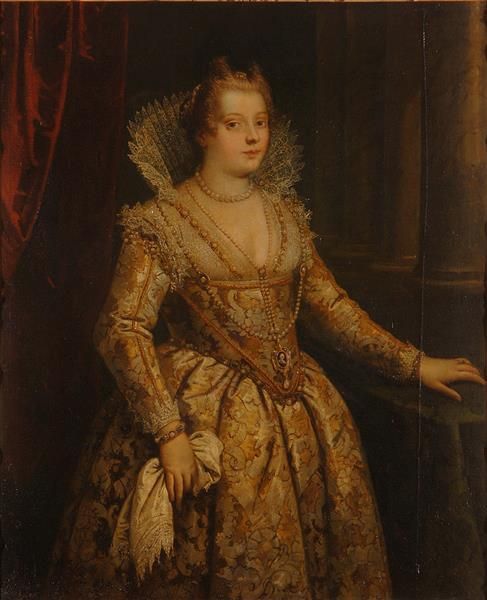

Around the same time, at the very end of 1500s, the extremely low cut bodice fashion enters rest of Europe. The low cut style was present in the bodices of all classes, but the nipple was really only an aristocrat thing. The lower classes would cover their breasts with a partlet, that was not sheer. Bare breast was ironically from our perspective a show of innocence, youthful beauty and virtue, and to pull off the style with respect, you also had to embody those ideals. Lower class women were considered inherently vulgar and lacking virtue, so a nipple in their case was seen as indecent. Bare boobs were also a sort of status symbol, since the upper class would hire wet nurses to breastfeed their children so they could show of their youthful boobs.
Covering partlets and bodices were still also used in the first decade of 1600s by nobles and the nip slip was mostly reserved for the courtly events. The first image below is an early example of English extremely low neckline that certainly couldn't contain boobs even with a bit of movement from 1597. The 1610s started around 5 decades of fashion that showed the whole boob. The first three were the most extreme. Here's some highlights: The second image is from 1619.
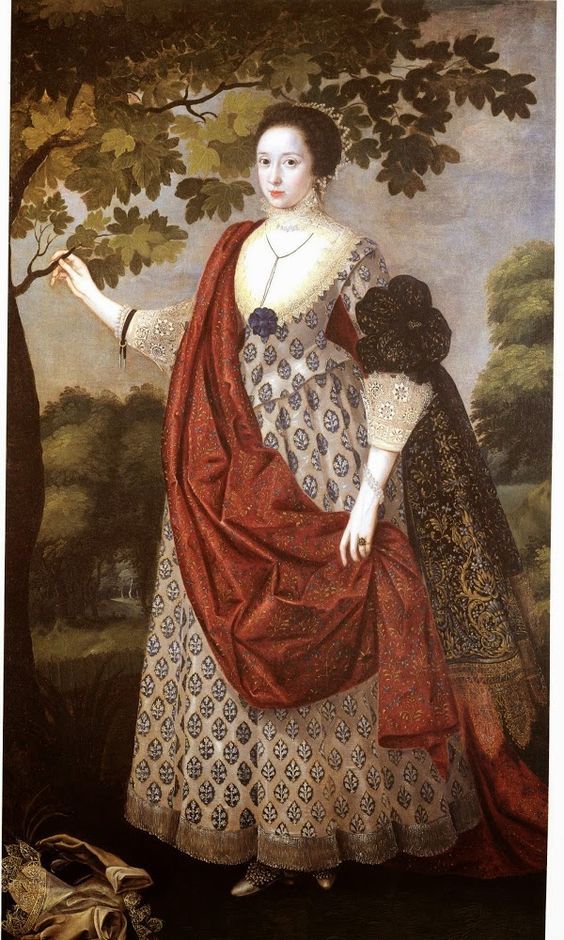

Here the first, very much showing nipples, from c. 1630. The second from 1632.
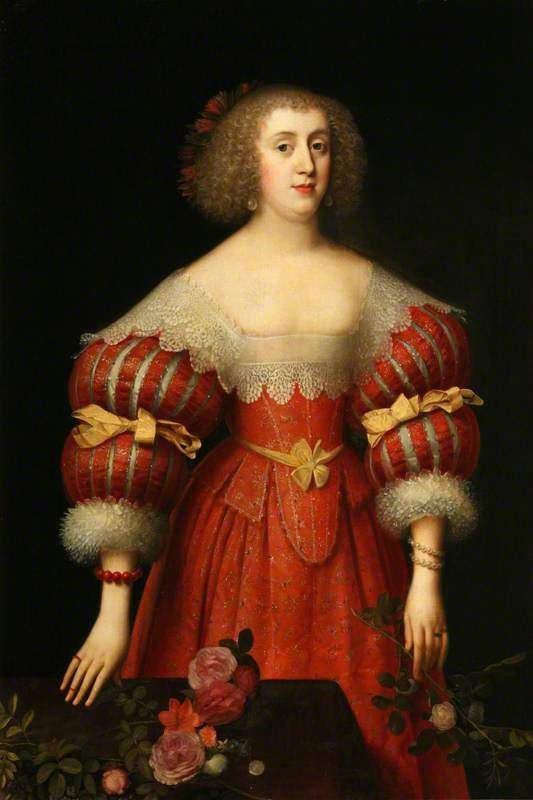

The neckline would slowly and slightly rise during the next decades, but nip slips were still expected. Here's an example from 1649 and then from 1650-55. In 1660s the neckline would get still slightly higher and by 1870s it was in a not very slippable hight. The necklines would stay low for the next century, though mostly not in boob showing territory, but we'll get there. But I will say that covering the neckline in casual context was expected. Boobs were mostly for fancy occasions. It was considered vain to show off your boobs when the occasion didn't call for it and covering up during the day was necessary for a respectable lady. You wouldn't want to have tan in your milk-white skin like a poor, and also they didn't have sun screen so burning was a reasonable concern.
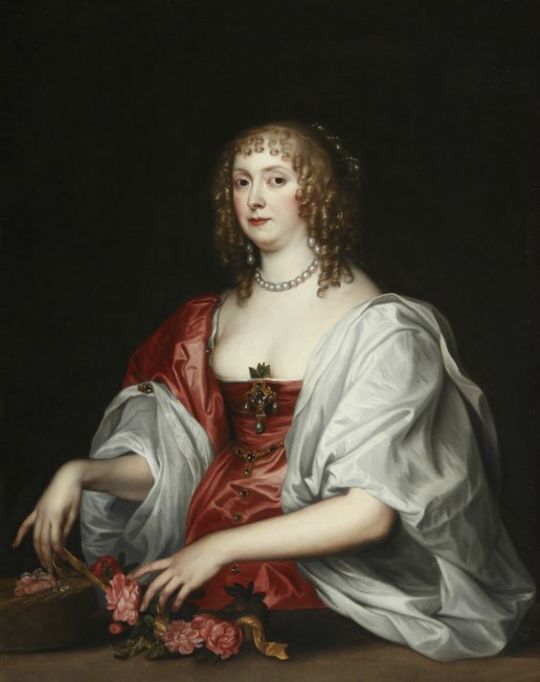
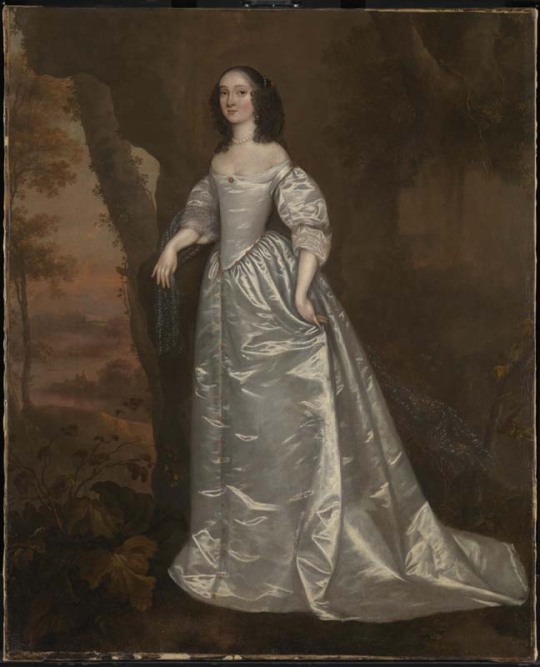
1720s to 1740s saw necklines that went to the nip slip territory, though they didn't go quite as low as 100 years earlier. The nipple was present in the French courtly fashion especially and rouging your nipples to enhance them was popular. Émilie Du Châtelet (1706-1749), who was an accomplished physicist and made contributions to Newtonian mechanics, was known in the French court to show off her boobies. An icon. Here she is in 1748. Here's another example from this era from 1728.
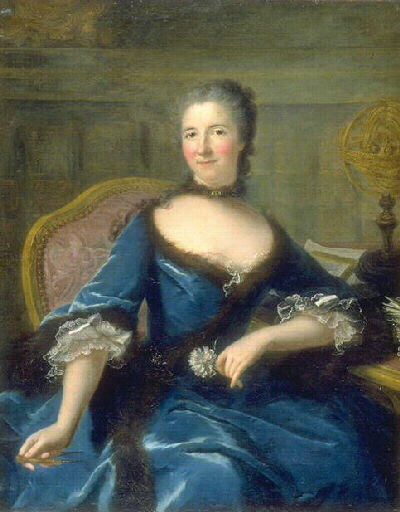
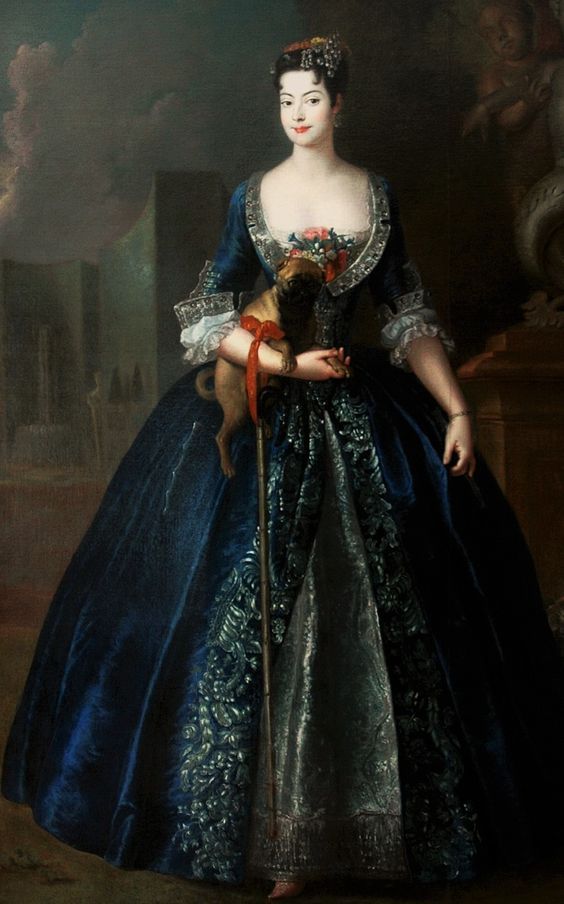
The Rococo neckline never got high, but in the middle of the century it was less low till 1770s when it plunged into new lows. In 1770s the fashion reached a saturation point, when everything was the most. This included boobs. The most boob visible. There was a change in the attitudes though. The visible boob was not a scandal, but it was risque, instead of sing of innocent and did cause offense in certain circles. I think it's because of the French revolution values gaining momentum. I talked about this in length in another post, mostly in context of masculinity, but till that point femininity and masculinity had been mostly reserved for the aristocracy. Gender performance was mostly performance of wealth. The revolutionaries constructed new masculinity and femininity, which laid the groundwork for the modern gender, in opposition to the aristocracy and their decadence. The new femininity was decent, moral and motherly, an early version of the Victorian angel of the house. The boob was present in the revolutionary imagery, but in an abstract presentation. I can't say for sure, but I think bare breasts became indecent because it was specifically fashion of the indecent French aristocracy.
Here's example somewhere from the decade and another from 1778. The neckline stayed quite low for the 1780s, but rose to cover the boobs for the 1790s.
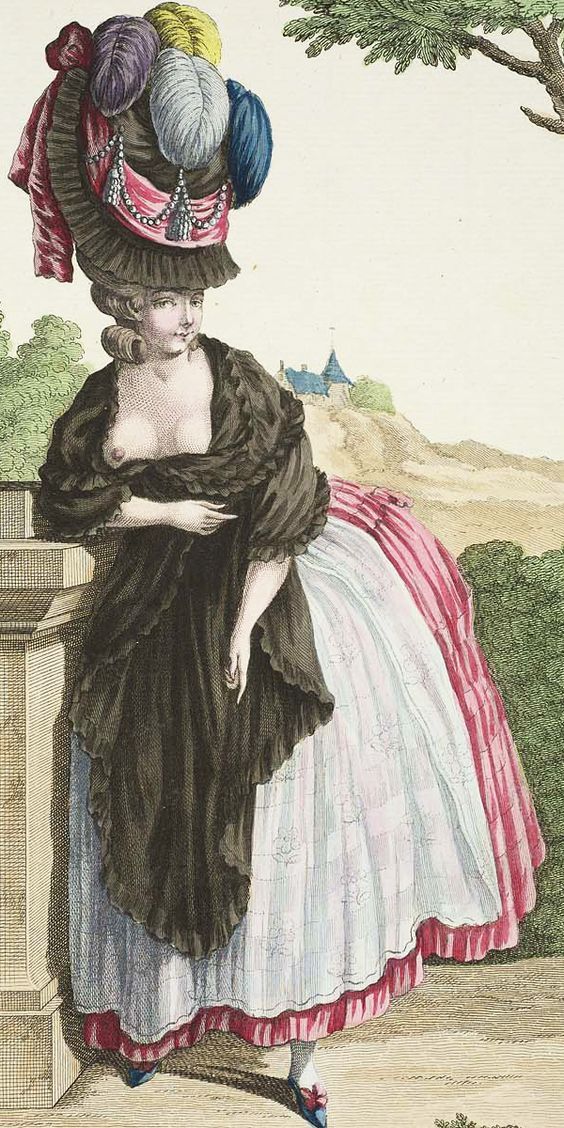
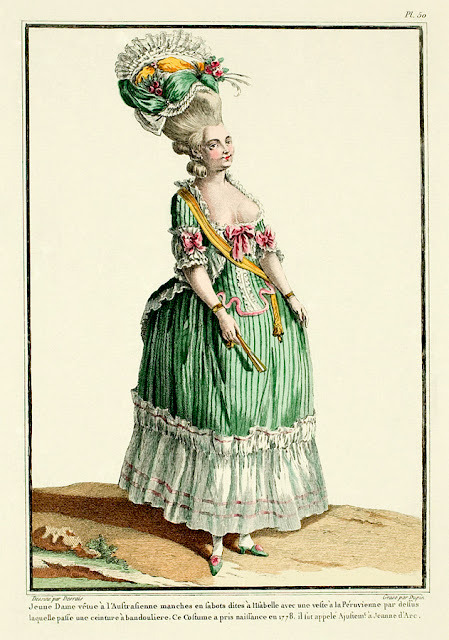
The nipple didn't stay hidden for long but made a quick comeback in the Regency evening fashion. It was somewhat scandalous by this point, and the nipple and sheer fabrics of the Regency fashion gained much scorn and satire. The styles that were in the high danger nip slip territory and those that allowed the nipple to show through fabric, were still quite popular. The sleeves had been mid length for two centuries, but in 1790s they had made a (rough) split between formal and informal wear. The evening sleeves were tiny, just covering the shoulder. Showing that would have been a little too much. Like a bare boob? A risque choice but fine. A shoulder? Straight to the horny jail. (I'm joking they did have sheer sleeves and sometimes portraits with exposed shoulder.) But long sleeves became the standard part of the day wear. Getting sun was still not acceptable for the same reasonable and unreasonable reasons. Day dresses did also usually have higher necklines or were at least worn with a chemisette to cover the neckline. Fine Indian muslin was a huge trend. It was extremely sheer and used in multiple layers to build up some cover. There were claims that a gust of wind would render the ladies practically naked, though because they were wearing their underclothing including a shift, which certainly wasn't made from the very expensive muslin, I'm guessing this was an exaggeration. Especially though in the first decade, short underboob stays were fairly popular, so combined with a muslin, nipples were seen. Here's an early 1798 example of exactly that. The short stays did disappear eventually, but in 1810s the extremely small bodices did provide nip slip opportunities, as seen in this 1811 fashion plate.


Victorian moralizing did fully kill the nip slip, though at least they were gender neutral about it. The male nipple was just as offensive to them. In 1890s, when bodybuilding became a big thing, bodybuilder men were arrested for public indecency for not wearing a shirt.
668 notes
·
View notes
Text
Obsessed with beautiful things, feelings, smells, language, sounds because that is all i have to remind me what it is to be fully alive. I can’t allow myself to miss out in what life has to offer!!! I need to be awake for it, because one day i will look back at the life that i was given and know that I loved it fully even in my grief.
3K notes
·
View notes
Text
I love this so, so much! 🥹❤️ My mum did the original red cross-stitch embroidery for the book when she was in her early 20s, I love seeing the fresh twist on it when I am now around the same age. The purple and green gives it such a nice, fresh spring vibe! ✨







I adapted pieces from this Czechoslovakian book from the 80s into an altar cloth for use at May Eve/Walpurgisnacht/Hexennacht/pálení čarodějnic.
#embroidery#czechoslovak embroidery#your talent is just so extraordinary! ❤️❤️❤️#sending you all the love in the world
64 notes
·
View notes
Text
like i quite literally have never been more passionate about anything than i am about the human race’s invariable desire to tell stories and the fact that we always find a way to do it, through spoken language and written language and body language and visual art and theater and poetry and oral tradition and a million other things. there are so many things we take for granted about the human experience that we never stop to think about but i really want you to take a step back and consider how fucking amazing it is that our need to tell stories transcends all boundaries of time and geography and borders and language. it is one of very few things that is legitimately intrinsic to human nature and i will never stop being completely in awe of humanity for that.
38K notes
·
View notes
Text

Offering by Rosalie Lettau
source: Rosalie Lettau
1K notes
·
View notes
Note
MAJOR CONGRATULATIONS ON FINISHING YOUR THESIS!!!! 🥳🎉
Thank you so, so much, my beloved Cee! ❤️ All went so well in the end, I managed to defend it with great success. And the state exams were so great, too. Only one left now. ✨
#ask reply#you are so generous! <3#managed to snatch all straight As for both the defence and the state exams 😇
3 notes
·
View notes
Text
Living on the outskirts now — twenty minutes away from the city centre, far away enough to bask in the small-town atmosphere. I spend my mornings on the balcony, barefoot, drinking coffee and running my fingertips over the edges of the pages. I wake up to sunlight pouring in through the curtains and chirping of the birds. My reading is finally more entertaining now, lighter, immersing myself in a historical fantasy after all the months of having to go through mandatory readings. My kitchen smells of homemade olive bread sticks. I spend my days searching for the loveliest home accessories, sorting out books into bookshelves, resting on cotton sheets with my hair wet, freshly washed. 🍃
#life these days#i have never felt so content and serene so i have to share on here <333#i am so sorry for being mia but i am just floating on my little cloud#i am slowly getting back to the digital life as well 🥰
7 notes
·
View notes
Text

52K notes
·
View notes
Text
it’s small joys saturday y’all let’s get it
52K notes
·
View notes
